Measuring flow in large pipes with an insertion magnetic sensor
Electromagnetic flow meters are widely used for many applications in the Water and Wastewater Industry. Large lines however often go un-metered because meter installations quickly become prohibitively expensive. This article explores the use of magnetic flow sensors as an economical and practical alternative to measuring flow in large lines, while preserving all the benefits of in-line Electromagnetic Flow Meters.
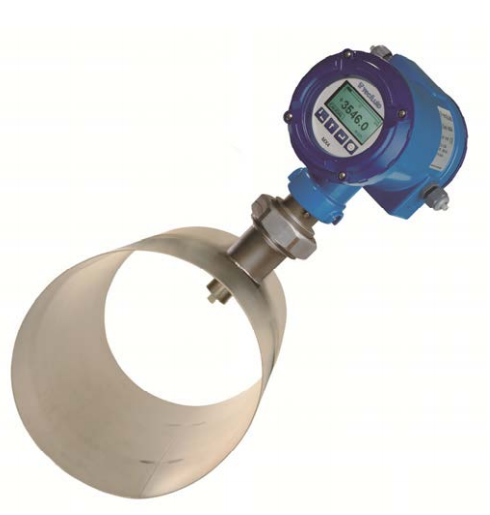 An insertion flow meter is defined as a meter that measures flow at a strategic point in a pipe, then uses that measurement to determine the average flow through the pipe. The terms “insertion meter” and “flow sensor” are used interchangeably. Flow Sensors rely on the same physical laws as do full bore flowmeters – electromagnetism, ultrasound, Bernoulli’s phenomena, heat transfer, and linear momentum. The difference is in the packaging.
An insertion flow meter is defined as a meter that measures flow at a strategic point in a pipe, then uses that measurement to determine the average flow through the pipe. The terms “insertion meter” and “flow sensor” are used interchangeably. Flow Sensors rely on the same physical laws as do full bore flowmeters – electromagnetism, ultrasound, Bernoulli’s phenomena, heat transfer, and linear momentum. The difference is in the packaging.
The emergence and current success of insertion meters is the result of economics. Simply stated, meters for large lines get prohibitively expensive, both to purchase and install. Often times large lines go unmetered simply because the expense cannot be justified even though the information a meter can provide is very useful.
Advantages of Magnetic Flowmeters
Electromagnetic (MAG) flowmeters have been widely used in industry for over 50 years, and for good reason, the advantages of MAG meters are irrefutable.
- High reliability – no moving parts
- No scheduled maintenance
- Good accuracy: 0.5% to 2.0% of reading
- Very wide range: up to 100:1
- No pressure drop
- Wide selection of materials
- Wide selection of fluids metered
MAG Meter Principles of Operation
All MAG Meters operate under the same fundamental principle of classical physics (Faraday’s Law of Electromagnetic Induction):
E = CONSTANT x B x D x V
The law states that the magnitude of the voltage (E) induced in a conductive medium moving through a magnetic field is directly proportional to the strength of the magnetic field (B), the path length between the probes (D), and the velocity of the medium (V). In principle and implementation it is possible to fix all parameters except velocity. Thus a MAG Meter responds only to “velocity” and is extremely insensitive to changes in fluid conditions (density, viscosity, etc.) and application constraints (pressure, temperature, and mechanical vibrations, as well as fluid pulsation).
The operation of a MAG Meter is completely analogous to an electrical generator. A voltage is induced in a conductor that is moving at right angles through a magnetic field. The faster the conductor moves, the more voltage is generated.
Typically MAG Meters become an integral section of the pipe and all of the liquid flows through the meter. This characteristic contributes to the major drawback of using MAG Meters in large lines. They are very expensive. The cost of flanges, spool pieces, liners and other hardware speaks for itself, when you consider line sizes of 18”, 36”, and even larger. Furthermore, the logistics of installing a meter weighing hundreds of pounds creates a “project” in its own right.
Often large lines are not metered simply because the expense cannot be justified. Even with all their advantages, MAG Meters in large lines can become too expensive.
In comes the Magnetic Flow SENSOR
This problem provided the impetus for the development of a MAG Flow Sensor. MAG Flow Sensors provide inexpensive metering of large lines, while preserving the advantages of Magnetic Flowmeters.
MAG FLOW SENSORS combine all of the elements of an in-line MAG Meter into a single, compact measuring situation. They determine total flow in a pipe by measuring flow over a smaller area.
In an Insertion Magnetic Flowmeter, all of the essential elements for a MAG meter are conveniently packaged in a sensing head.
The performance of an insertion magnetic flowmeter reduces to understanding how fluids flow in a pipe. Specifically, to the relationship between a point measurement at any place in the pipe and the total flow through the pipe.
Long story short, a MAG Flow Sensor is capable of reading the average flow characteristics within a pipe, giving the user an accurate picture of their flow. Accuracy of Mag Flow Sensors are rated for an Absolute Accuracy of +/- 2.0% of reading and repeatability of +/- 0.25%.
Packaging an electromagnetic flowmeter in the configuration of a “flow sensor” produces a host of metering advantages:
Reliability – Since the sensors respond only to fluid velocity, an extremely reliable meter is possible. There are no moving parts, nothing to Wear out, no scheduled maintenance is required; and the meter is insensitive to changes in pressure, temperature, mechanical vibrations, density, viscosity, pressure and/or pressure surges. The meter responds only to fluid velocity.
Rangeability – In theory a MAG SENSOR has an infinite measuring range. However, the low end limits of any flowmeter are determined in part by the fluid dynamics in each pipe and by the ability of electronic transducers to measure low signals. Mag Sensors using a microprocessor converter have demonstrated rangeability (turndown) of 100:1 and better.
Easy Installation – A “fixed” meter configuration is used when it is easy to shut down the lines before and after the meter location. The fixed meter configuration is less expensive.
Retractable meters, which can be installed and removed without line shut-down, are used when it is not possible or it is very inconvenient and expensive to isolate lines. Installation is further simplified by the fact that only 3 inch taps are required on each line. For pipes made of cast iron, concrete or plastic, mounting saddles are employed.
Submersible Sensors – Mag Flow sensors can be configured for IP67 (International Standards) for accidental submersion. In the event that the vaults flood during a heavy rainstorm the sensors will continue to operate for 48 hours under water. For more severe conditions, IP68, full time submersion, is possible.
Universal Meter Design – The meter is designed so that two sizes cover the entire practical range of most meter applications. This design feature offers great utility for in-field service. One (or two) spare units can support an entire plant. At the same time, training, documentation, and support are greatly simplified.
MAG FLOW SENSOR CASE STUDIES
Flow sensors (Insertion Meters) have proven to be the ideal solution for flow application that have one or more of the following constraints:
- Not possible to shut line to install meter
- Large lines >/= 8 inches
- Application does not justify large metering expense
- Logistical support for meter must be simple and easy
The following cases illustrate some of these parameters:
Solution: Install MAG Flow Sensor via a “Wet Tap” procedure to measure intake and return of the raw water lines. The meters were required to operate under water (IP 68) due to flooding conditions. Electronics converter was installed in a control room 300 feet away from the sensors.
A West Coast Utility received water via a 54-inch main which it shared with another community. The meter was required to be accurate, measure flow in forward and reverse direction, operate under water and be installed without shut-down. Solution: A MAG Flow Sensor was “Wet Tapped” into the line. The sensor was submersible (IP 68) and bi-directional. Converter electronics were remotely located 100 feet away from the sensor.
Solution: Fixed insertion meters were installed because the lines could be easily shut down. Pointed electrodes were used to make it difficult for coating to interrupt contact with the fluid and a high voltage electrode cleaner was also employed.
Solution: A dual point MAG Sensor was wet tapped on the line. The sensors were “flush mounted” to the pipe wall. This configuration addressed both priorities: accuracy and retractability. Electronics were remotely located 100 feet away from the sensor.
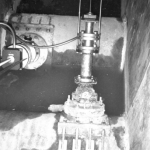 A Municipal Power Plant in Florida was required to monitor its usage of raw water from the Intercoastal Waterway. Lines varied in size from 36 inches to 64 inches and were approximately 10 feet underground.
A Municipal Power Plant in Florida was required to monitor its usage of raw water from the Intercoastal Waterway. Lines varied in size from 36 inches to 64 inches and were approximately 10 feet underground.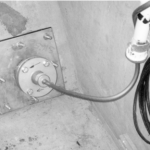 A West Coast Water and Wastewater Treatment Plant required metered for two 82-inch lines containing treated waste. Prior attempts to meter failed because of a coating on the electrodes.
A West Coast Water and Wastewater Treatment Plant required metered for two 82-inch lines containing treated waste. Prior attempts to meter failed because of a coating on the electrodes.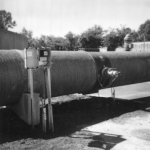 A 48-inch Raw Sewage line required metering. The customer wanted the best available accuracy and a retractable configuration so meters could be easily removed for cleaning and/or entanglement of debris.
A 48-inch Raw Sewage line required metering. The customer wanted the best available accuracy and a retractable configuration so meters could be easily removed for cleaning and/or entanglement of debris.
The Bottom Line
MAG Flow Sensors are a very versatile tool. They have been used to solve many flow problems that had no other solution.
MAG Flow Sensors offer a breath of fresh air when it comes to metering large pipes. Metering can now be done at a reasonable cost without sacrificing the benefits of Magnetic Flow Meters.
Contact Metron Technology for more information or a personalized quote.

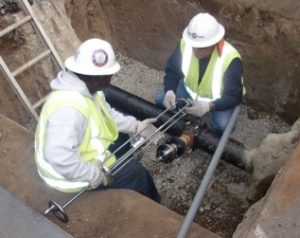
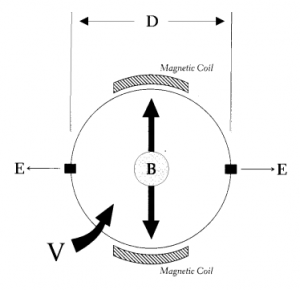
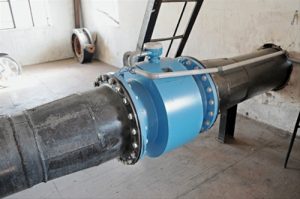
Google
Wonderful story, reckoned we could combine a handful of unrelated data, nonetheless genuinely worth taking a look, whoa did one learn about Mid East has got additional problerms as well.
Google
The time to study or take a look at the material or web sites we’ve linked to beneath.